Detailed Study of a Proposal for a Computer Based Tutoring Strategy
Volume 8, Issue 3, Page No 1-10, 2023
Author’s Name: Soukaina Nai1,a), Amal Rifai2, Abdelalim Sadiq1, M’hamed Bakrim3
View Affiliations
1Computer research laboratory, Faculty of Sciences, University Ibn Tofail, Kenitra, 14000, Morocco
2Team of Research in engineering of Computing Environment for human learning, Regional Center for the Professions of Education and Training, Rabat, 10000, Morocco
3Laboratory of Processes for Sustainable Energy and Environment, University Cadi Ayyad, Marrakech, 40000, Morocco
a)whom correspondence should be addressed. E-mail: soukaina.nai@gmail.com
Adv. Sci. Technol. Eng. Syst. J. 8(3), 1-10 (2023); ![]() DOI: 10.25046/aj080301
DOI: 10.25046/aj080301
Keywords: Tutoring, Portfolio, Learning E-portfolio, Assessment E-portfolio, Presentation E-portfolio
Export Citations
In this article, we propose a new tutoring strategy to combat school dropout in Morocco. This strategy is based on a collaborative approach involving educational administration and teachers at the national level to ensure equity and equal opportunities for all Moroccan students, on the one hand, and the quality of the training, on the other. Its implementation will be ensured through a computerized system based on the student’s learning and evaluation portfolios in order to provide individualized assistance, taking into consideration his/her shortcomings and didactic needs. In this work, after defining tutoring and its types, we will present the Moroccan ministerial strategy in terms of tutoring by discussing the relevance of the tutoring systems prevailing in Morocco and the existing platforms accredited by the Ministry of Education. Then, we will study the portfolio concept and its forms, in addition to some criticisms established on this tool in order to identify the components, ensuring the quality of the tutoring to be taken into account in our proposed IT solution. Finally, we will study in detail the design of our system by modeling the evaluation and remediation processes and examining its functional behavior.
Received: 15 February 2023, Accepted: 23 April 2023, Published Online: 15 May 2023
1. Introduction
In Morocco, students face serious academic challenges, especially in certain scientific fields. According to statistics published by the Ministry of National Education, quoted by [1], more than 300.000 students dropped out of school in 2019-2020. Indeed, 76.574 students left school at the primary education level, or 2.1%, compared to 95.191 (2.7%) in 2018-2019, whereas at the secondary level, the school abandonment rate has decreased from 8.8% to 7.4% or from 80.560 students to 67.134. These statistics show that the dropout rate for students remains high and has not appreciably declined.
On the other hand, [2] states that there are many different factors that positively or negatively influence retention and success of young students. These factors are interrelated and fall into four categories: environmental or social factors, family factors, personal factors and academic factors (such as quality and/or learning disabilities). When these factors exert a negative influence, they become risk factors that increase the likelihood of more difficulties during their schooling, which can lead to dropping out of school. Whereas [3] announces that school repetition stems to be an endemic phenomenon with multiple causes. In fact, according to a study conducted on fail, the difficulties in succeeding in class are mainly due and in order of importance to:
- Gaps, students school delays, and a lack of solutions to catch up.
- Inadequate school curricula and assessment systems (difficult, frequent changes).
- Quality and behavior of the teachers (severe, the lack of pedagogy, not conscientious enough).
- Distance from school to home and lack of transportation.
- Financial problems.
- Frequent absences for work or family reasons.
This makes tutoring an important necessity in the fight against school dropout due mainly to learning difficulties. For these reasons, we will propose in this work, a new tutoring strategy to achieve equity and quality at the national level. This strategy focuses on a participative approach between educational administration and teachers via a computerized academic support system based on student portfolios. Thus, a detailed examination of our project will be presented to identify the requirements of our system via a detailed design.
This paper is structured as follows: In the first paragraph, we will discuss the definition of tutoring and its different types, the Moroccan tutoring strategy and the problems envisaged in the proposed platforms. Then, in the second paragraph, we will define the concept of the portfolio, its different types, the advantages of the electronic portfolio (e-portfolio) and the techniques of its design. Next, we will discuss the strengths and weaknesses of the portfolios in order to identify the essential elements to be taken into account in our new solution. In the third paragraph, we will present a general description of our solution, and then we will proceed with a detailed computer study through which we will address the functional behavior of our system by establishing the class, use cases and activity diagrams of the various elements and processes involved. And we will end with a conclusion.
2. Tutoring
2.1. Definition of tutoring
Tutoring is recognized in the academic community by various terminologies, namely : “academic tutoring ”, “educational assistance”, “support education”, “tutoring”, “coaching”, “ accompaniment”, “collaborative learning”, etc., and defined in different manners.
Indeed, according to the Moroccan Ministry of Education (cited by [4]), it is “a collection of pedagogical and technical tools that can be used both inside and outside of the classroom, usually as part of school-related activities, in order to prevent and avoid any kind of failure that might endanger the student’s ability to learn normally”.
As stated in [5], tutoring is a type of “supplemental learning” that involves “assistance given by different speakers outside of class hours and during extracurricular activities” . Its purposes are to:
- Challenges and mitigate insufficiencies in a class of students.
- Compensate for the differential learning levels in the classroom, reduce the dropout and repetition rates, and increase the level of education through cost-effective development and efficiency improvements.
- Support the learner’s continuing academic progress in the situation of missed classes due to sickness or poor concentration.
2.2. Type of tutoring
Academic support can be provided internally during school time in the form of instant or deferred tutoring for individuals or groups of students, as well as externally, outside of school time.
“Instant remediation is a set of pedagogical and/or didactic strategies, attitudes, and behaviors that promote the provision of specific help to students suffering from particular difficulties following a [teacher’s] assessment” [6] cited by [7]. It is completely incorporated into the teaching/learning sequence and prevents any kind of stigmatization due to the exclusion of the learner. It instantly responds to needs that emerge during a lesson. It is conducted by the teacher who is familiar with the student and the context in which the difficulty arises and focuses on problems that can be rapidly resolved and do not require specific treatment (occasional blockages, mistakes, barriers to progress…).
While deferred remediation is done separately from the teaching/learning sequence and is conducted either by the teacher of the student needing remediation or by another teacher. It can be planned at a specific time and have a regular duration. According to [8], Its purpose is to meet demands within a specified time frame with a limited group of learners (students with similar challenges, homogenous groups) or to intervene sustainably and simultaneously on obstacles that hinder the learning of multiple operations (heterogeneous groups). It can take on past issues that have existed for a long time or problems that demand a more coherent intervention: scholar delay, return to concepts not previously acquired, total reconstruction of a course sequence.
Deferred remediation can also be offered outside of school hours in the form of fee-based courses provided by teachers other than the student’s teachers, in order to be able to upgrade it in a specific subject. In addition, [9] states that due to the lack of teachers and the increase in the school hourly load, the overload of school programs, the increase in the number of students, the form of internal tutoring has been gradually eclipsed to let invade the external tutoring. In fact, private tutoring has undergone significant development in Morocco, as in the rest of the world, and “is deeply rooted in the culture of many countries. […] In the early of the 21st century, it became established in Eastern Europe and Central Asia and increasingly important in Western Europe, North America, Australasia and Africa. In addition, it has begun to emerge in Latin America” [10].
External tutoring is “paid teaching provided outside school hours in academic areas taught at school. They are provided by suppliers who may be professors or students, either independently or as part of a business framework that pays them or links them to consumers” [11].
2.3. Moroccan Ministerial Strategy for Academic Support
2.3.1. Face-to-face tutoring
In Morocco, tutoring is still a necessary component of the programs and charters decreed by the Ministry of Education. Indeed, a reform has implemented the recommendations of the National Education and Training Charter (CNEF), stating in Article 27 “every effort will be made to attract learners and guarantee that their education grows continuously, sustainably, and effectively, and that waste, academic failure, or the fictitious or intermittent pursuit of studies are gradually reduced ” [12].
Then, the E1.P5 project of the 2009-2012 emergency program placed among its priorities the fight against repetition and dropout, by establishing an individual monitoring system for each student, providing assistance to those who need it, and setting up refresher courses for them. The same objective has been maintained in the strategic vision (2015-2030) of the Moroccan Higher Council for Education, Training and Scientific Research. In fact, in lever 1 (area 6) of this vision, the focus was on setting up structures able to monitor learners, progressively in the short term, and to envisage intensive academic support for learners in difficulty as a right to be guaranteed and integrated into curricula programs and school time. In the same vision, lever 7 (area 29 (a)) also insisted on “the integration of educational support programs for students with difficulties into the curricula, official programs and school time”.
Whereas, in lever 8 (area 35), in order to ensure the generalization and achievement of equity, it was required to develop new technical requirements for independent schools, adjusted to the types of educational investment, their specific characteristics and geography, including: “the rules for support and strengthening courses and their insertion as an inseparable element of the programs of study and curricula”. This implies that internal tutoring is an integral part of the national education process.
2.3.2. Distance tutoring
The Moroccan Ministry of Education has set up several distance learning platforms for tutoring through a system called Massar. It is an integrated educational system, proposed by the Moroccan Ministry of National Education in 2009 as a pilot program in schools to modernize and improve the educational system using technologies of information and communications (ICT).
The Massar system is based on an online platform that manages student, teacher and school data: management of grades, absences and lateness, …. It also aims to improve teaching by hosting learning or training content management platforms. Among these platforms, we can mention the Massar Moutamadris platform, TelmidTice, e-Takwin, … These platforms set up electronic spaces containing videos, course summaries, courses and exercises, exams, for all subjects and for all levels and school cycles. These resources are accessible and downloadable for free and are created by volunteer teachers, without any prior pedagogical planning to take into consideration the differentiation of typical student profiles.
Students access to these courses is voluntary, depending on their needs, their means (possession of a smartphone or a computer with an internet connection), their desires and their computer skills to explore these platforms and their contents. This implies the lack of serious supervision of tutoring and its individualized implementation for each student. In addition, there is no pedagogical supervision of the students on these platforms to ensure the success of the desired remediation.
In addition, there are other Moroccan websites of content management that are defined as academic support sites and offer students courses and exercises for free or paid download such as SchoolMouv Morocco, Educatix, E-learning Morocco, …
2.4. Issues raised in the tutoring strategies adopted in Morocco:
In [4], the author conducted a research project to diagnose the types of tutoring in Morocco and their educational, and socio-economic impacts on students and their families. This investigation demonstrated the importance of mentoring for some students, particularly in science courses. But, on the other hand, it identified several problems, as private tutoring is the most widely adopted in Morocco. Among these, this type of tutoring generates an additional burden that hinders the purchasing power of the students’ parents, and a considerable loss of energy, money and time. These parents put the responsibility on the Ministry of Education, the teaching system, the overload of the programs, without forgetting the part of the teacher, who gives tutoring lessons despite his overloaded schedule.
A further research paper, produced by the EPI organization [13], was conducted to determine Moroccan students’ perception of the different facets of private tutoring in secondary schools, the results achieved, and the students’ interest in tutoring websites. For that purpose, a survey was sent to learners, and the result of this study revealed great interest in student tutoring, and that over half of them use online sites for this reason. Nevertheless, about 50% of learners are in favor of free tutoring at school from their teachers.
On the other hand, the same research team, using a sample, evaluated the Moroccan tutoring websites to find out if they provided learners with interactive and social constructivist activities. This research was supported by an assessment matrix developed from already used educational website analysis matrices, each dealing with one or more aspects: technological, ergonomical, pedagogical, etc. Overall, the researchers found that the designers and authors of the sites studied had made great efforts. However, their diagnosis raised many comments, including in particular:
- Usability and ease of navigation are moderate.
- Most sites are quite static.
- There is a quasi-absence of interactivity.
- Some sites present business advertising.
- Teaching strategies are not meaningfully defined.
- The designers simply transfer the content of the textbooks to the net.
- Methodological help is totally absent from all the sites, whereas it would have been more beneficial to help the learner to “ work better ”.
- There is no return of information to correct the learner’s mistakes.
As for the platforms offered by the Ministry of Education via the Massar system, they have raised the following shortcomings:
- Lack of effective implementation of these platforms due to lack of student awareness about their existence, importance and handling;
- The pedagogical support offered is conventional, with similar exercises and lessons for all students, due to the lack of a pedagogical design strategy that takes into consideration the differentiation of student profiles, as well as the lack of an entity specialized in the validation of published pedagogical resources;
- Support remains unofficial, it is optional, it is the student’s choice to access the system or not.
- Lack of structuring of learning according to units of the same curriculum, which can make it difficult for learners to progress in their learning.
- Lack of follow-up, which can make it difficult to assess the effectiveness of support and measure learner progress.
- Lack of evaluation of the acquisition of a targeted skill ensuring the quality of the tutoring since these platforms only offer courses and exercises.
Based on the above issues related to tutoring, more effort is needed to:
- Provide academic support in the skills that are part of the official curriculum. This should be free and of high quality to all students nationwide in order to guarantee equity and equal opportunity.
- Establish and supervise tutoring by teachers and educational administration in a participatory approach to put it in an official framework and make it a part of the mission of the Moroccan school.
- To provide individualized tutoring to each student, taking into consideration his/her needs and profile. To do this, we propose to use the student’s learning and evaluation portfolios to identify the student’s shortcomings and to provide him/her with the precise support appropriate to his/her difficulties.
Before detailing our solution, in the next section, we highlight in the following section, the concept of portfolio, its various types, its advantages and the techniques of its design. We also point out these benefits to be taken into consideration in the design of our proposed system.
3. Portfolio
3.1. Definition
The portfolio concept is “derived from the professional and artistic world. In his portfolio, an artist presents a sampling of his works, comments, critical articles that accompanied them. He shows his creative path, shows the traces of his work, of the evolution of his creative thought” [14].
In the educational field, [15] defines a developmental portfolio as a “set of works that records, over a given period of time, the learner’s progression in the acquisition of specific professional competencies”. Based on this definition, [16] affirm that “the portfolio serves as a tool for validating prior learning, as well as a means for planning and guiding personal and professional growth. It also allows the individual to become more aware of his or her values, skills, beliefs and professional practice”.
According to the Northwest Evaluation Agency (NWEA), quoted by [17], a portfolio is a collection of a student’s work presenting his or her efforts, progress and achievements in one or more areas. This definition is used to define the concept of portfolio in a UNESCO document [18].
In [19], the authors give another definition of the concept, also provided by the NWEA, considering that the portfolio is: “a finalized and reasoned collection of documents testifying to the quality and progression of a student’s work through certain achievements”. This definition adds the notion of selection of documents in the portfolio, which is echoed in the definition given in a report by the Direction of educational resources, of the Quebec Ministry of Education [20], where the working group defines the portfolio as “a selection of students’ projects that demonstrate competence by keeping relevant records of their accomplishments”. We can also read below that « the portfolio reports on the student’s personal progress”. [21] states that in general, a portfolio can contain:
- Written documents (texts, graphs, printouts, copies of evaluations, etc.),
- Photographs (taken during an open house, the completion of a project, an organized trip, etc.),
- Multimedia elements in the form of CD-ROM (video recording of a student presentation), etc.
3.2. Types of portfolios
In [15], the writer distinguishes three types of professional development portfolios, namely:
- Portfolio “Just for me”: this type of portfolio is based on a personalized and individualized approach. “It is the learning portfolio that the student controls, manages and opens to whomever he/she wants.” [15]. It is designed by the learner by indexing and storing various documents and reflections to learn and evaluate their learning in order to self-regulate and facilitate metacognition. However, “it does not offer a satisfactory space for telecollaboration, regulation and evaluation.” [15].
- Portfolio all-in-one based on the “Big Brother’s gas factory”: This is the institutional portfolio, designed to perform a summative evaluation, to certify, to establish a grade, to assess learning. This type of portfolio will also be very useful to future employers.
- The three distinct portfolios approach: Learning, Presentation and Evaluation Portfolios. This approach favors a reflective approach. The learning portfolio “is a collection of works of all kinds, completed or not, accompanied by the student’s reflections on their achievements” [20]. In [22], the researcher states that the portfolio can be used for a variety of purposes, such as focusing on student progress or for diagnostic purposes. In the first case, we choose works showing the student’s progress over a given period of time, which allows us to motivate the student and illustrate his or her progress, mainly for the parents. In the second case, work is chosen that illustrates the student’s weaknesses and strengths, or notes on work methods and preferences.
In a learning portfolio, the student must comment on his methods and the means used to achieve his work. They can record their most significant work, comment on it and reorganize the content. All these transactions permit the student to engage with the teacher and other learners on the same subject [20]. The reorganization of the content also makes the student conscious of what has been learned [20]. According to [22], This type of portfolio helps teachers who adopt it in the classroom to change the way they view students and assess student work by taking more variables into account than before.
The presentation portfolio: “This type of portfolio is the most similar to the artists’ portfolio” [22]. It allows to “present the best productions of the student or those he prefers” [20]. “These productions are most often selected by the student who has to justify his preferences by annotating the documents” [23]. “It is intended to be presented to others: peers, teachers, friends, but also parents, and even to a wider public during an exhibition” [20]. By creating this portfolio, the student summarizes what he/she thinks at a given moment about his/her productions, his/her progress or his/her learning.
The evaluation portfolio: according to [20], this type of portfolio makes it possible to evaluate a student’s skills throughout and at the end of a school term. It is similar to a summative evaluation process. It is used for self-assessment, evaluation, and certification. In this type of portfolio, the teacher selects and inserts several samples of the student’s accomplishments so that a judgment can be made about the level of competency achieved. The student places in the portfolio the productions that he or she deems appropriate to demonstrate the development of the competency.
The three portfolios of learning, assessment, and presentation are interconnected, interoperable (including a password and a data protection system), and portable (can be deleted, redone, saved).
For all three files, the student participates in the evaluation (self-evaluation and student-teacher co-evaluation).
3.3. Benefits of the electronic portfolio
According to [17], the electronic portfolio (e-portfolio) appeared in the early 1990s. It has some benefits over the paper portfolio. In [19], the editors identified some of these benefits namely:
- It is easier to revise and modify than its printed counterpart.
- It can be put online, fully or partially, and thus be rendered public, making it more portable, better distributed and more secure.
- It can also provide the institution with information on the progress and results of a course.
In [14], the essayist defines several advantages of the digital portfolio by considering that the portfolio is:
- A reflective space, it “seeks to respond to a fundamental problem for the teacher in charge of accompanying and training trainees”. Indeed, it allows him to appropriate the work, discussions, productions, etc., carried out by himself or by the trainees during the didactic sessions to rethink the class. It also allows him to build writing and working habits and “learn to record pre-course expectations, critical incidents that have occurred, specific student behaviors, comments from colleagues, interesting materials, ideas for new projects, etc.”
- It keeps track and makes it possible to come back to it, it allows reformulation, […], filing but also deletion […]. Its purpose is to record the training over time and to keep track of it […] to give trainees time to acquire knowledge, methods and intellectual attitudes, and to become familiar with the space in which and through which they learn. This contributes to the development of skills and identity.
- It favors the weaving of knowledge between them and with the knowledge of action, professional, intellectual, emotional experience, this helps the teacher to progressively elaborate complex conceptual frameworks, from which he/she can think, decide on the pedagogical action to be taken.
- “The social structure of knowledge, a construction that accompanies the progressive development of professional identity”, in the first instance, with his peers.
- A possible space to dialogue with the trainers.
- An instrument among others of evaluation, by referring in this process, within the framework of certification commissions, to the discourses established by the trainees on their work, on their practices, on their attitudes in the establishment.
3.4. Conception of an electronic portfolio
In [21], the writer states that the structuring of a portfolio depends on the goals pursued by its designer. Then, he emphasized that the best organization of a portfolio amounts to thinking and answering several questions about the type of portfolio to be created, the content that should be saved in this portfolio, the category of work to be presented in the portfolio, the person responsible for the choice of the productions presented in the portfolio, the way of ordering the productions,.., the criteria for selecting the productions.
Technically, “it may be necessary to set up an IT environment to manage student e-portfolios” [23]. The report [20] identifies the essential components of a digital portfolio:
- Student management software (creating student groups, assigning passwords, privileges and disk space to each student).
- A document management function (identification, filing, copying, deletion, etc.).
- A function for recording and managing student, teacher and parent comments and annotations on student work.
- A function for displaying the student’s work and for limited and secure consultation of the comments attached to this work.
- A secure area management function.
3.5. Discussion
The interest of such a portfolio is, in particular, to make it possible to see the evolution of a student’s learning over the long term. In [23], the writer summarizes the gaps in the learner’s portfolio in an assessment context in the following points:
- The learner’s portfolio includes the work completed and selected by the student, not those specified by the teacher. “Successful completion of a specific task does not infer generalized competence” [22]. Therefore, it is important to use the student’s portfolio within an official framework that is inseparable from the school program, and the validation of the student’s competencies and the selection of his or her representative productions must be carried out according to a standardized evaluation and assessment program validated by the educational administration and the teachers.
- Saving learner information in the electronic portfolio is not durable enough because it is not possible to “leave visible elements that the learner may wish to remove” [19]. Therefore, the selection of student productions to be presented to the public must be well thought out and carried out within an official framework of validation of academic skills.
- Finally, in [19] the editors wonder if the move to standardize the portfolio in order to simplify its evaluation, or the use of the electronic portfolio by users who are not very familiar with the technology, will lead to the loss of creativity associated with the portfolio. Therefore, we propose that the use of the portfolio must fulfill a consequent need to ensure the educational and personal development of the student. Therefore, it must be based on a study that takes into consideration all the elements related to the management and monitoring of the student’s learning through a semantic computer system with ergonomic and easy-to-use interfaces.
In the following paragraph, we will present our tutoring solution basing on the points from above discussion and those highlighted in paragraph 1.4.
4. Description of the proposed tutoring system
4.1. Overview of the Proposed Academic Support Strategy
According to [15], the portfolio professional development has two functions, the first one is to enhance the quality of education, to promote support and monitoring of learning, while the second one is to promote the learner’s authentic self-assessment, which leads to better knowledge and self-esteem. In [14], the essayist indicates that “[…] The portfolio […] is reflexive because it puts people on hold. It allows for deferred feedback, and thus the distancing of decisions taken in the heat of the intervention, but also of school situations and contexts, the actors, and the worked objects”.
Our new strategy is based on a nationally standardized participatory approach of school support between educational administration and teachers, according to [24], based on the institutionalization of the use of the student’s portfolio in support and monitoring of their learning.
This process will be accomplished by setting up an ergonomic computer platform. This platform must be based on a semantic system that provides students with assessment activities of their skills acquired at the end of one or more school units and remediation activities in case they do not succeed in validating the school skills targeted by the assessment. The purpose of these remediation activities is to help students acquire their school skills. Competency assessment time slots are to be determined regionally by regional education and training academies.
The preparation of the evaluations must be ensured by the teachers and the inspectors of the subject.
The latters, based on the competence to be validated and the targeted cognitive level, must propose suitable differentiated pedagogical activities in the form of problem situations or open questions that must be corrected by subject teachers, or closed questions (multiple choice questions, multiple choice questions, short answer questions, fill-in-the-blank questions, ….) generated by numerical exercises that can be corrected automatically. The result of the assessment and the student’s production should be recorded in their assessment e-portfolio.
When a student is unable to pass an assessment, the failure score must be reported in the student’s assessment portfolio. Then, in order to ensure that the student follows up on the same failed skill, the system should send a message to the student’s account notifying him/her of the completion of the differentiated remediation activities, indicating the time allotted for this process and stating that the student will be receiving the remediation.
The remediation process must be carried out by the student’s teacher at the local level. The remediation activities completed by the student should be recorded in the student’s learning portfolio and commented on by the student’s teacher.
Once the remediation activities have been completed according to the time frame given by the system, the student must be re-evaluated to determine his or her degree of mastery of non-validated skills. The class diagram in Figure 1 sketches the academic support process under the proposed system.

Figure 1: Activity diagram
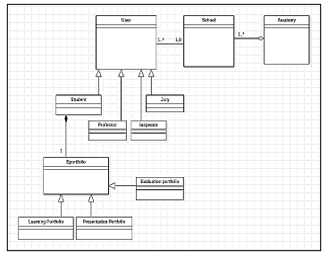
Figure 2: Class diagram of roles
4.2. System roles.
The main agents who act with the system are : students, teachers, inspectors and the jury whose role is to approve the assessment and remediation activities. There are two juries, a regional one nominated by the academy and a national one that approves the propositions of the academies’ regional juries in such a way as to unify the tutoring policy at the national level. The class diagram in Figure 2 models the actors that interact with the proposed tutoring system.
4.3. Model the assessment and remediation processes
The system of tutoring is principally composed of a skills assessment interface, a learning interface and student portfolios. These two first areas are connected together. The assessment space contains the assessment activities corresponding to a learning unit within a curriculum. They are elaborated by professors and inspectors and approved successively by a regional jury and a specialized jury at the national level. The student must have an account in order to access this interface and complete the assessment activities corresponding to a learning unit after its completion or at the end of the remediation period. The activities completed as well as the marks and feedback will be recorded in the student’s assessment portfolio in order to evaluate the level of their acquisition of the school skills targeted by the assessment process.
If the assessment result is satisfying, then the school’s competency will be declared validated in the student’s presentation e-portfolio while recording their production of the assessment therein. The class diagram in Figure 3 is used to model the evaluation process.
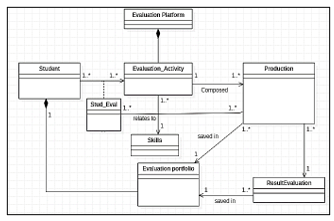
Figure 3: Class diagram of the evaluation process
If the outcome of the skills assessment is not satisfactory, the student will be required to complete the remediation activities that the system will suggest to overcome his difficulties, and then he will assess himself again on the same skill that he failed. The class diagram in Figure 4 illustrates the modeling of the remediation process.
4.4. Functional behavior of the proposed system
To improve understanding the system functioning and the interactions with users, we detail in this section the scenarios of the main use cases.
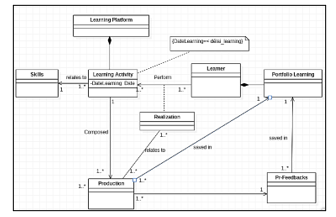
Figure 4: Class diagram of the remediation process
4.4.1. Administrator’s use case diagram
The administrator plays a central role in the platform and is responsible for creating student and teacher accounts, managing the user list, updating the database, administering all documents and responding to reported complaints. The administrator must authenticate himself in order to access his administration interface. The use case diagram in Figure 5 illustrates the different tasks assigned to the administrator.
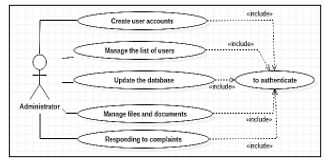
Figure 5: Administrator’s use case diagram
This diagram describes the set of functionalities provided to the administrator (main actor) to ensure the management process of the proposed system (goal). The actor must log on to the system as an administrator (Precondition) in order to perform all the functionalities offered by the system.
The administrator links to the use cases via 2 types of relationships: association; meaning that the administrator can trigger a feature, and inclusion which indicates that the actor can only perform the use case features after a correct authentication to his account.
4.4.2. Student’s use case diagram
The main objective of the proposed system is to support students in their learning. To do this, the student can interact with the system to:
- Complete his registration to the tutoring platform,
- Change his passwords,
- Authenticate himself,
- Manage his e-portfolio profile (update his personal and professional information),
- View other presentation portfolios,
- Access to the assessment & remediation/learning interface, open the proposed assessment, process it and submit the answer,
- Consult his scores, incorrectly answered questions and correct answers to incorrect questions,
- View the list of remediation activities offered to overcome deficiencies,
- Complete the remediation activity and save it in his learning portfolios,
- View the answer key for remediation activity and the teacher’s feedback,
- Claim a problem, communicate with colleagues and the teacher (Forum area),
- Download documents from the platform and import documents into the platform and manage his e-portfolios (comment on productions).
The diagram describes all the functionalities provided to the student (main actor) for better use of the system. The student must log in to the system with his own account (Precondition) in order to benefit from all the functionalities offered by this system. The student links to the use cases also via 2 types of relationships: association and inclusion.
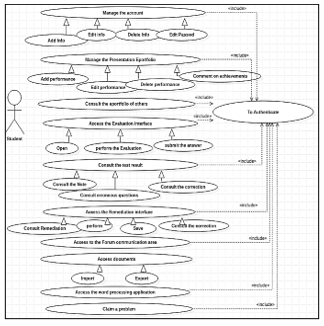
Figure 6: Student’s use case diagram
4.4.3. Teacher/Inspector’s use case diagram
The proposed solution can be operational only with the appreciated participation of our teachers. Indeed, they have access to the platform to:
- Complete their registration to the tutoring platform. (School levels at which the teacher provides courses, regions, institutions, …),
- Modify their passwords,
- Authenticate themselves,
- Manage the e-portfolio profile (update personal and professional information),
- View student portfolios,
- Enter comments, feedbacks, instructions and grades to students,
- View teacher and inspector profiles,
- Import and export documents to and from the platform,
- Communicate with colleagues (Forum space: communication space between teachers and inspectors of the same specialty),
- Prepare evaluation quizzes in a questionnaire interface in the platform,
- Prepare remediation activities,
- Collaborate with teachers and inspectors to prepare evaluation and remediation activities using online collaboration tools,
- Send developed activities to the pedagogical jury for validation,
- Communicate with students to discuss a lesson or activity,
- Apply to be a member of the regional or national jury,
- Claim a problem,
- The Inspector can also Consult the success rate of students.
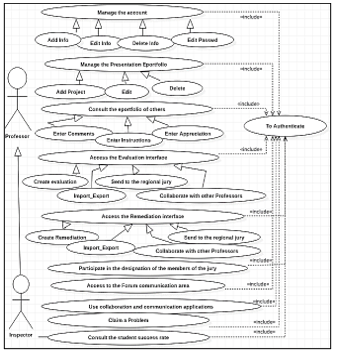
Figure 7: Teacher/Inspector’s use case diagram
The diagram describes all the functionalities provided to the teacher and the inspector (main actors) for better use of the system. Both actors must log in to the system with their own accounts (Precondition) in order to benefit from all the functionalities offered. The system gives the inspector the right to perform the same functions offered to the teacher: inheritance relationship, and to consult the success rate of the students.
4.4.4. Regional jury’s use case diagram
The regional juries can also access this platform to:
- Authenticate themselves.
- Comment on assessment/remediation activities,
- Update assessment activities,
- Update Remediation activities
- Validate assessment activities,
- Validate remediation activities,
- Submit the assessment and remediation activities to the national jury for validation,
- Publish the assessment and remediation activities validated by the national jury,
- Set dates for assessments,
- Communicate with teachers and inspectors.
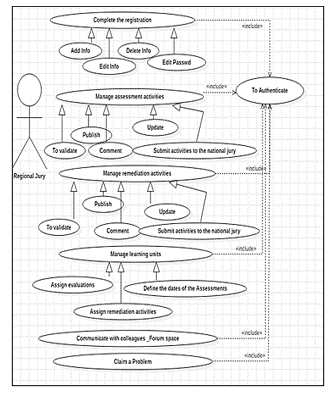
Figure 8: Regional jury’s use case diagram
4.4.5. Diagram of evaluation sequences
The evaluation process takes place according to the following scenario:
- The system sends messages to students to inform them of assessment date, the message contains a link to access the assessment activities.
- The students achieve the assessment activities and record their work,
- The system corrects the assessments made by the students,
- The system transmits the assessment activities achieved by students and the result to his assessment e-portfolio,
- The system transmits the good student achievement (all the productions with confirmation of the acquisition of competence) in his presentation portfolio.
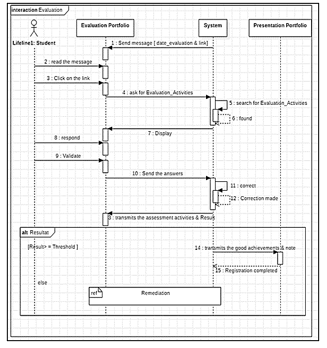
Figure 9: Diagram of evaluation sequences
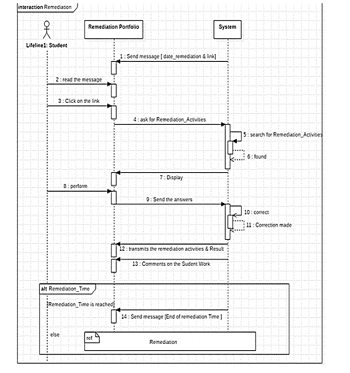
Figure 10 : Diagram of remediation sequences
4.4.6. Diagram of remediation sequences
The remediation process takes place according to the following scenario:
- The system sends messages to students to notify them of remediation date, the message contains a link to access the remediation activities,
- The students achieve the remediation activities and record their work,
- The system transmits the remediation activities achieved by students and the result to his learning e-portfolio,
- The system/ teacher corrects the student work, comments on it and discuss with student.
- When the remediation time is reached, the system sends a notification to the student.
5. Conclusion
In this article, we have proposed a computerized tutoring system based on a participatory approach involving educational administration and teachers to ensure equity and quality in education at the national level.
After introducing the concept of tutoring, defining its types and raising the problems of tutoring strategies in Morocco, we discussed the portfolio concept, its different kinds, the advantages of the electronic portfolio and the criticisms made about this tool.
Next, we presented a detailed study of our computerized tutoring system designed using student portfolios. In this study, we specified the adopted tutoring strategy, modeled the learning and assessment processes addressed in this system, and detailed its functional behavior.
- K. Rachdi, “Enseignement : 300.000 élèves ont quitté les bancs de l’école en 2020,” Kiosque 360, 2021.
- M. Intérieur, “Promouvoir la réussite scolaire et l’épanouissement des enfants et des jeunes,” Ministère De L’intérieur, 2021.
- M. Education, “Morocco Programme Urgence,” Ministère De l’Education Nationale, 2008, Planipolis.Iiep.Unesco.Org/Sites/Default/Files/Ressources/Morocco_Programme_Urgence_Najah_Rapport_Detaille_Version_Projet.Pdf.
- A. Zbadi, “La problématique du soutien scolaire au maroc. diagnostic et perspectives,” Haut Commissariat Au Plan, Centre National De Documentation, 2018.
- W. Wikipedia, “Soutien scolaire,” Wikipedia, 2020, fr.wikipedia.org/wiki/Soutien_scolaire.
- A. Hirsoux, “Aider les élèves en difficulté d’apprentissage par la remédiation immédiate : expérimentation de deux outils pédagogiques dans l’enseignement fondamental,” Mémoire de licence en sciences de l’éducation Université de Mons, 2006.
- A. Dehon, A. Derobertmasure, “La Remédiation Immédiate,” Université de Mons, 2009.
- M. Saibi, T. Ouaguenoun, “La remediation au cycle primaire,” 2016, www.facebook.com/TimizartOuaguenoun/posts/la-remediation-au-cycle-primairei-définition-de-la-remédiation1-la-remédiation-p/199630273741523/
- A. Zbadi, “La Problématique Du Soutien Scolaire Au Maroc. Diagnostic Et Perspectives,” Semion Med, Haut Commissariat Au Plan, Centre National De Documentation, 107–129, 2018.
- M. Bray, “L’ombre Du Système Educatif : Quel Soutien Scolaire Privé, Quelles Politiques Publiques ?,” Institut International De Planification De L’éducation (UNESCO, France), 110–111, 2011.
- D. Glasman, B. Leslie, “Le Travail Des Elèves Pour L’école En Dehors De L’école,” Haut conseil de l’évaluation de l’école France, 52–53, 2004.
- Conseil supérieur de l’éducation et de la formation , “Charte nationale d’éducation et de formation, Maroc, Rabat,” 1999, www.takween.com/charte-part2.html.
- A. Rhazal, N.E. Elidrissi, A. Elhajjami, “Les Elèves Marocains Et Le Soutien Scolaire : Recours Au Soutien Privé Et Usage D’internet,” EpiNet, 2014.
- D. Bucheton, “Du Portfolio Au Dossier Professionnel : Eléments De Réflexion,” Montpellier, IUFM de Montpellier Equipe LIRDEF ALFA, 2003, http://probo.free.fr/textes_amis/portfolio_bucheton.pdf.
- R. Bibeau, “L’usine a gaz ou le eportfolio de Big Brother,” Formation et Profession , 33–36, 2006.
- A. Vallerand, S. Martineau, “Recension Des Ecrits Sur Le Portfolio Et Le E-Portfolio, En Tant Qu’outils Pouvant Favoriser L’insertion Professionnelle En Enseignement,” Québec: Laboratoire D’analyse De L’insertion Professionnelle En Enseignement, Université du Québec à Trois-Rivières, 2007.
- H. Barrett, “Electronic Portfolios,” Abc Clio, 2001, transition.alaska.edu/www/portfolios.ht.
- United Nations Educational Scientific and Cultural Organization, “Information and Communication Technologies in Teacher Education. A planning guide,” unesdoc.unesco.org/images/0012/001295 /129533e.pdf.
- G. Baron, E. Bruillard, “Les Technologies De L’information Et De La Communication En Education Aux USA : Eléments D’analyse Sur La Diffusion D’innovations Technologiques,” Revue Française de Pédagogie, 37–49, 2003.
- M. Quebec, “Portfolio Sur Support Numérique: Ministère De L’éducation Du Québec, Direction Des Ressources Didactiques,” Ministère de l’Education du Québec , 2002 , www.education.gouv.qc.ca/fileadmin/site_web/documents/dpse/ress_didactiques/portfolio.pdf.
- N. Duroisin, “L’approche Orientante, Le Portfolio, Conception Et Modèle D’utilisation, En Route Vers La Réussite Scolaire Et Professionnelle Des Elèves,” Hainaut: UMONS, 2011.
- J. Pierrette, “Le Portolio Scolaire : Une Autre Façon D’évaluer Les Apprentissages,” Vie pédagogique, 31–33, 1997.
- C.E. Bavay, “Le Portfolio En Education : Concept Et Usages,” Journal International des Sciences de l’Information et de la Communication, 9–11, 2004. isdm.univ-tln.fr/PDF/isdm18/27-eyssautier.pdf.
- S. Nai, A. Rifai, A. Sadiq, “Proposal For a Computer-based Tutoring Strategy,” IEEE INISTA Kocaeli, Turkey, 2021, doi: 10.1109/INISTA52262.2021.9548452.
Citations by Dimensions
Citations by PlumX
Google Scholar
Crossref Citations
No. of Downloads Per Month
No. of Downloads Per Country
